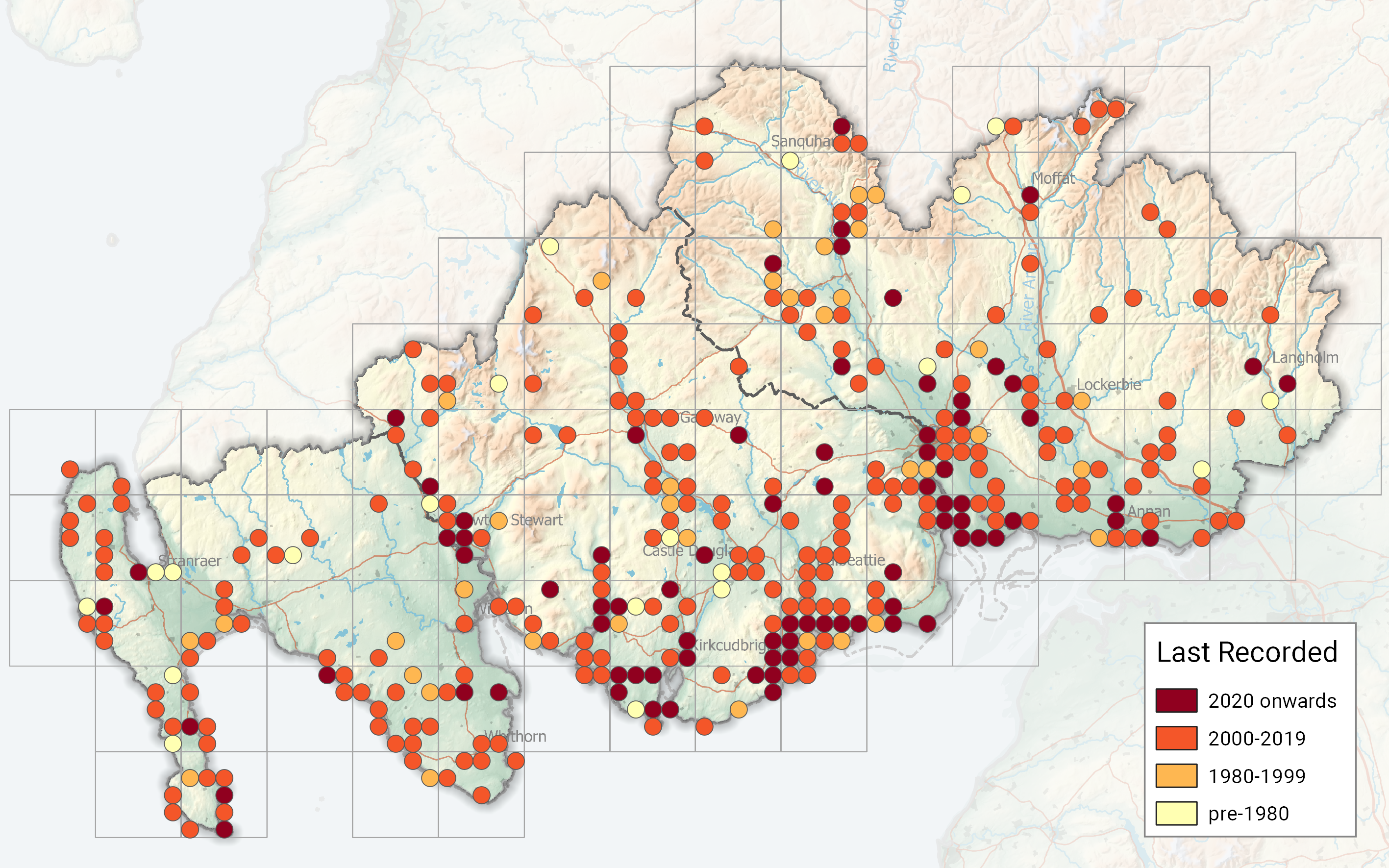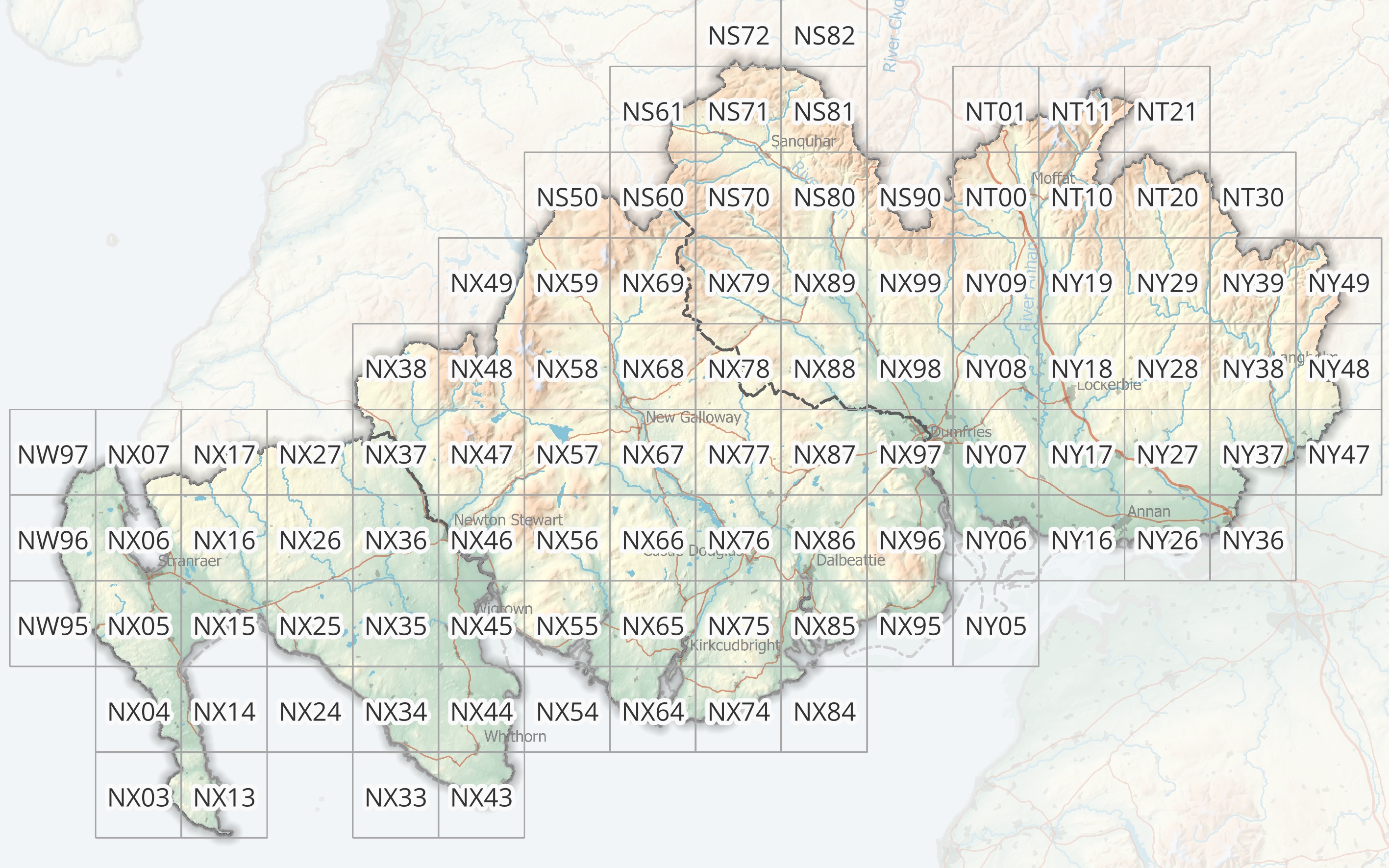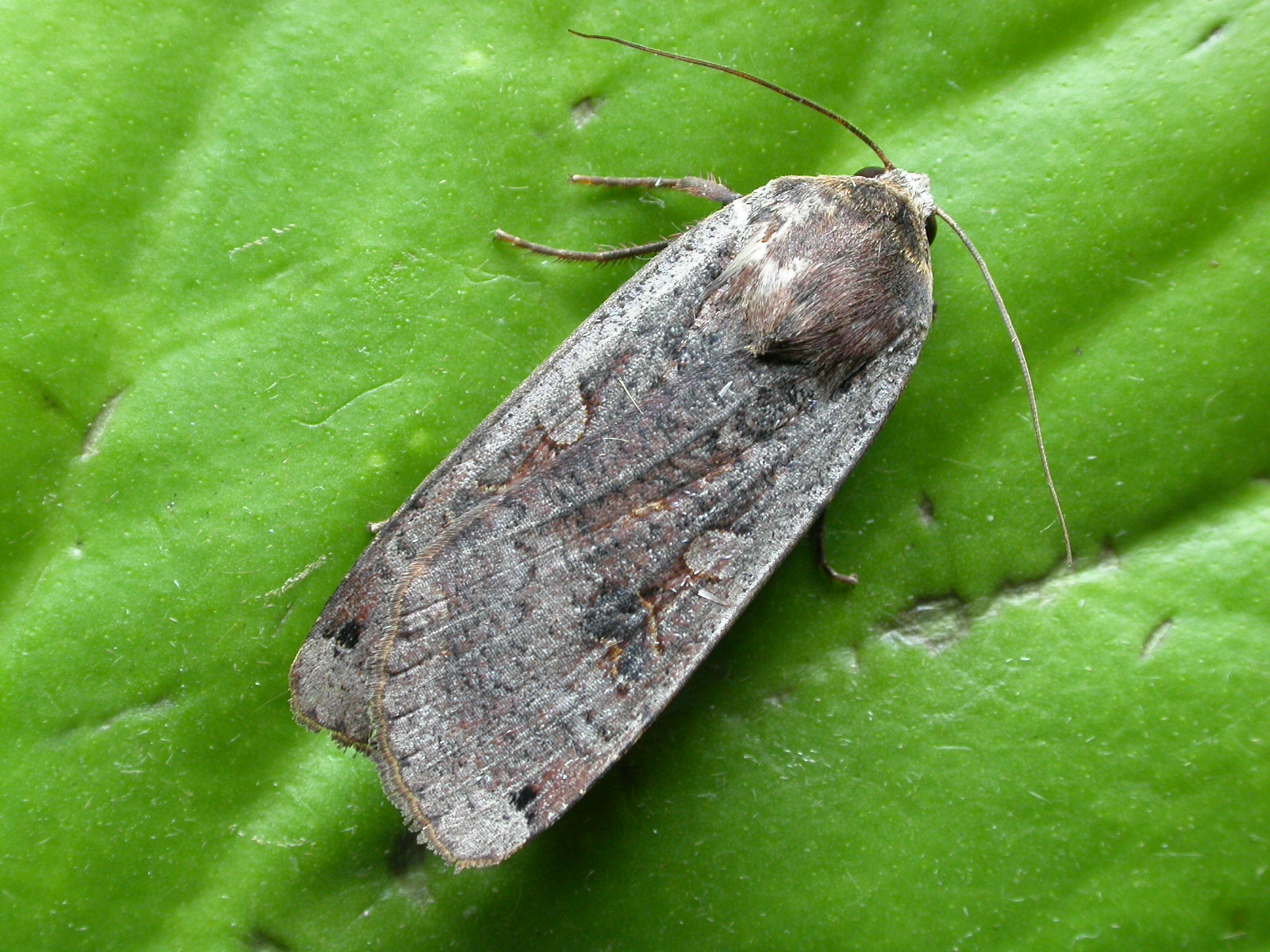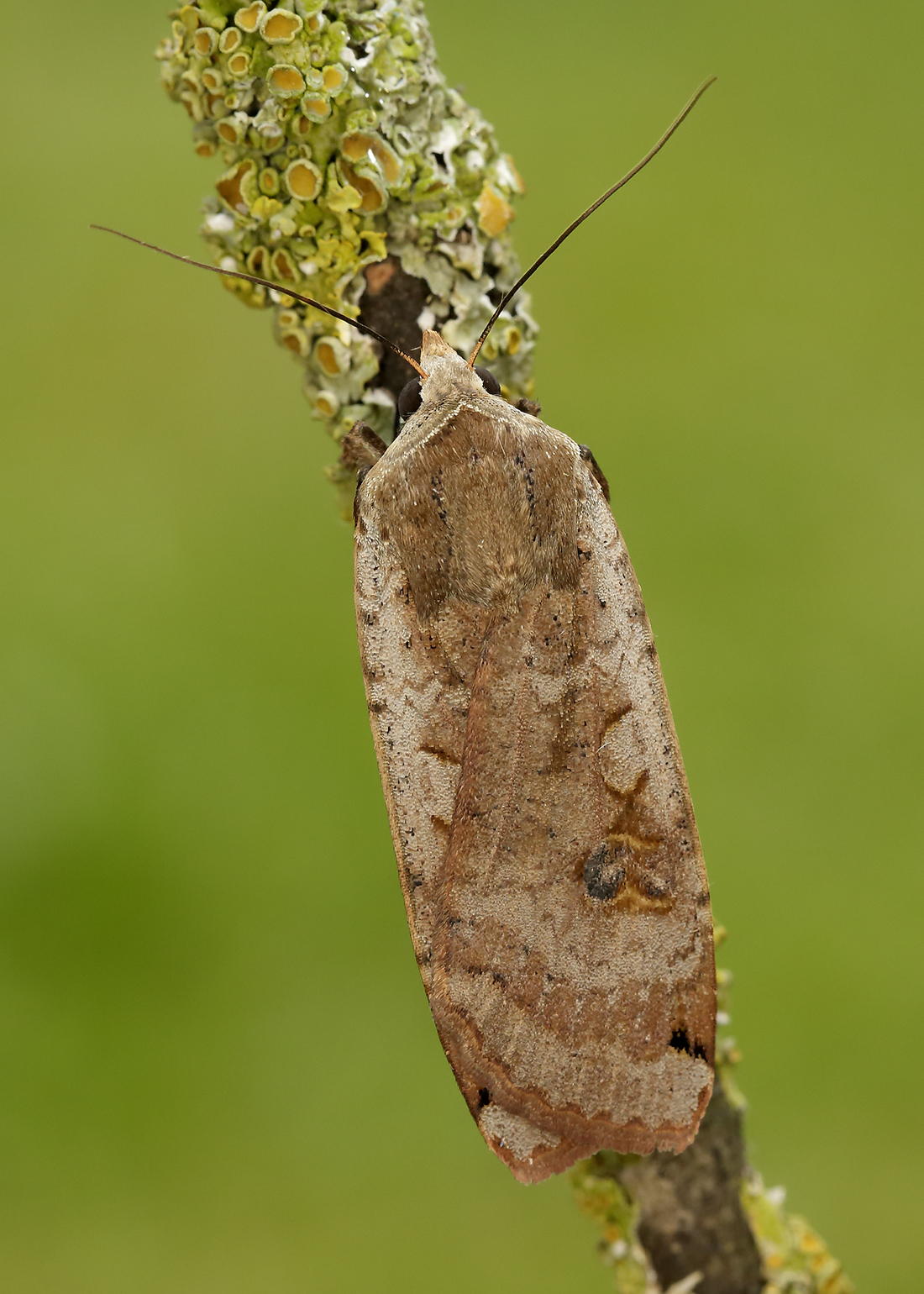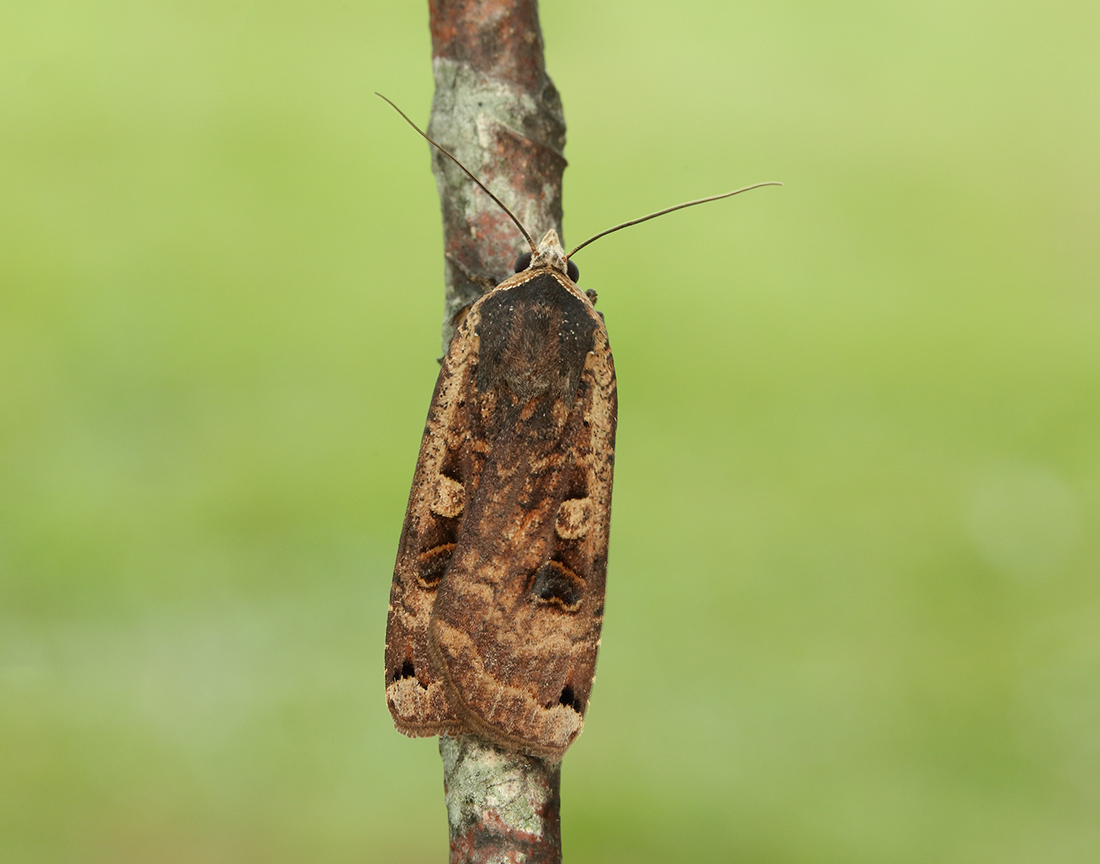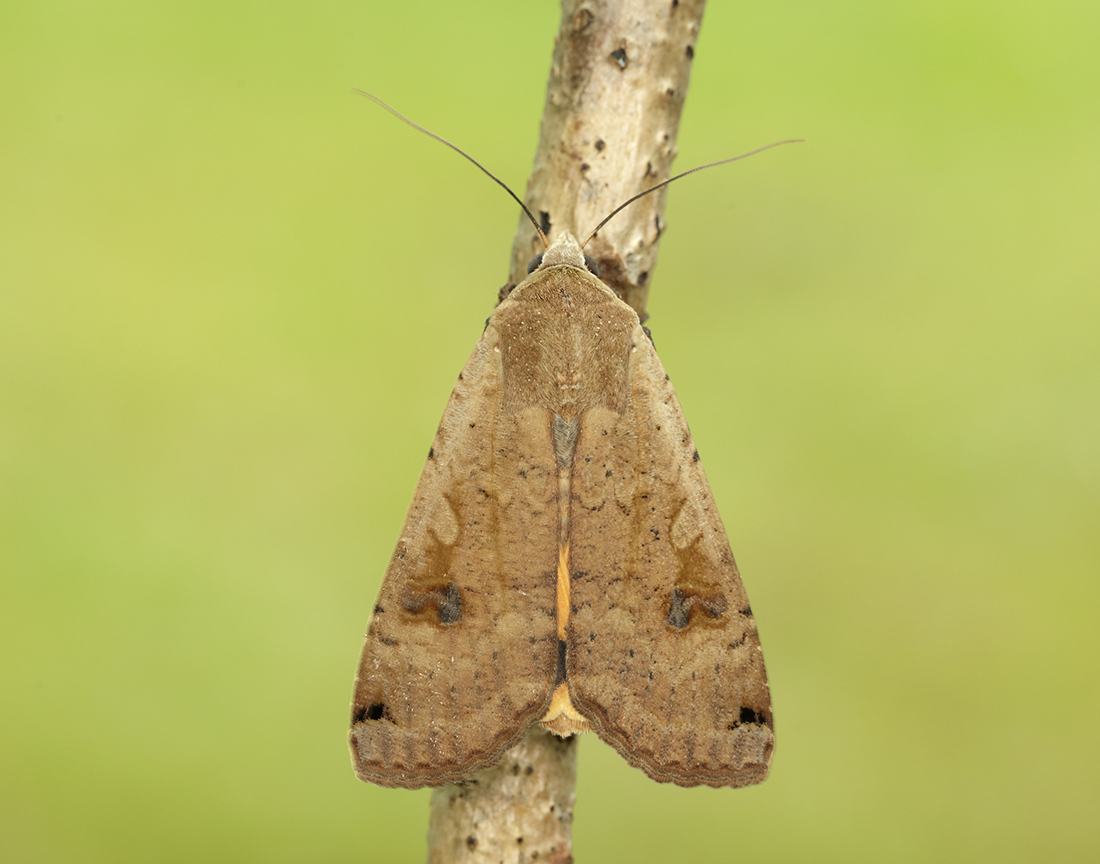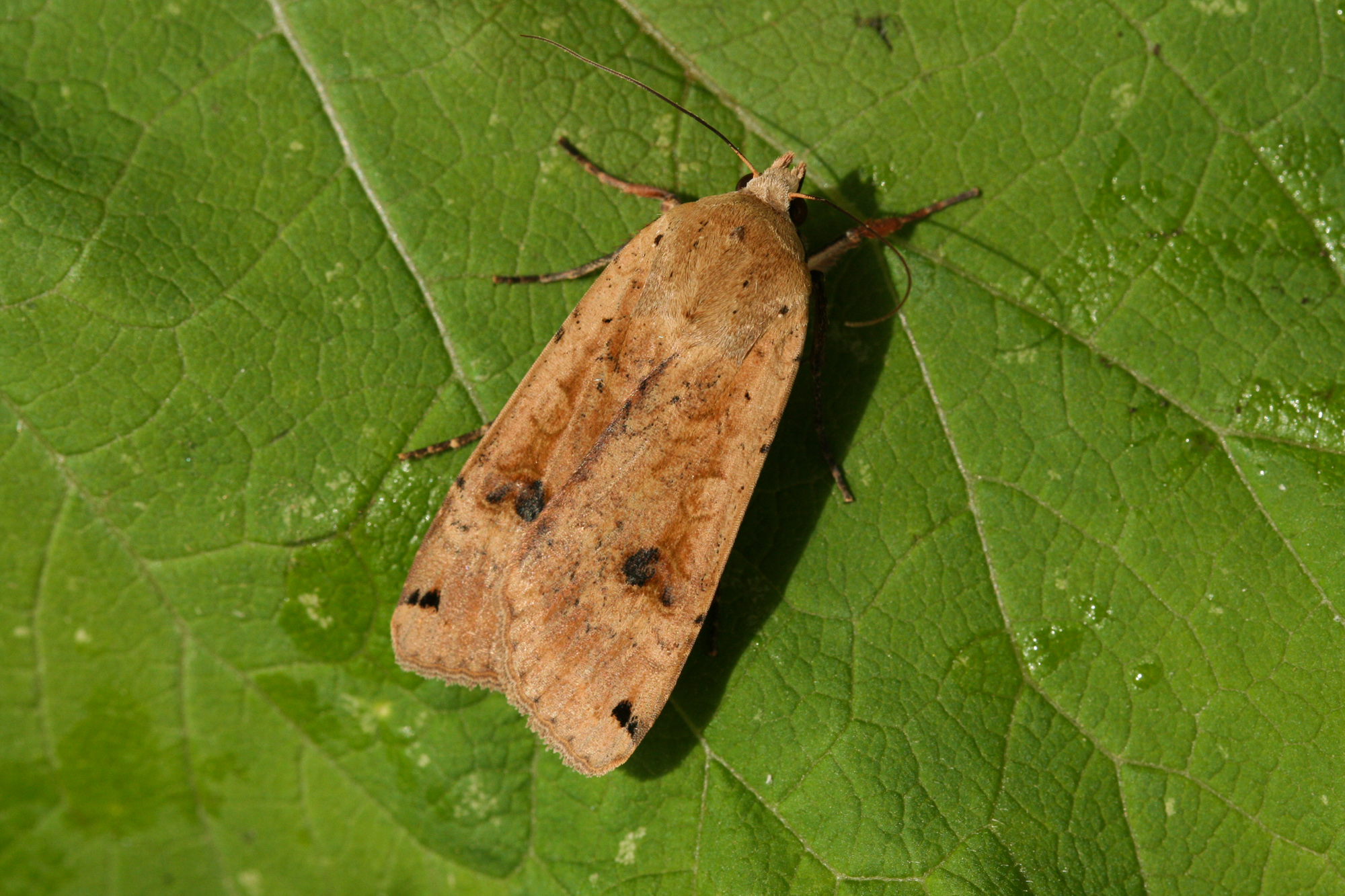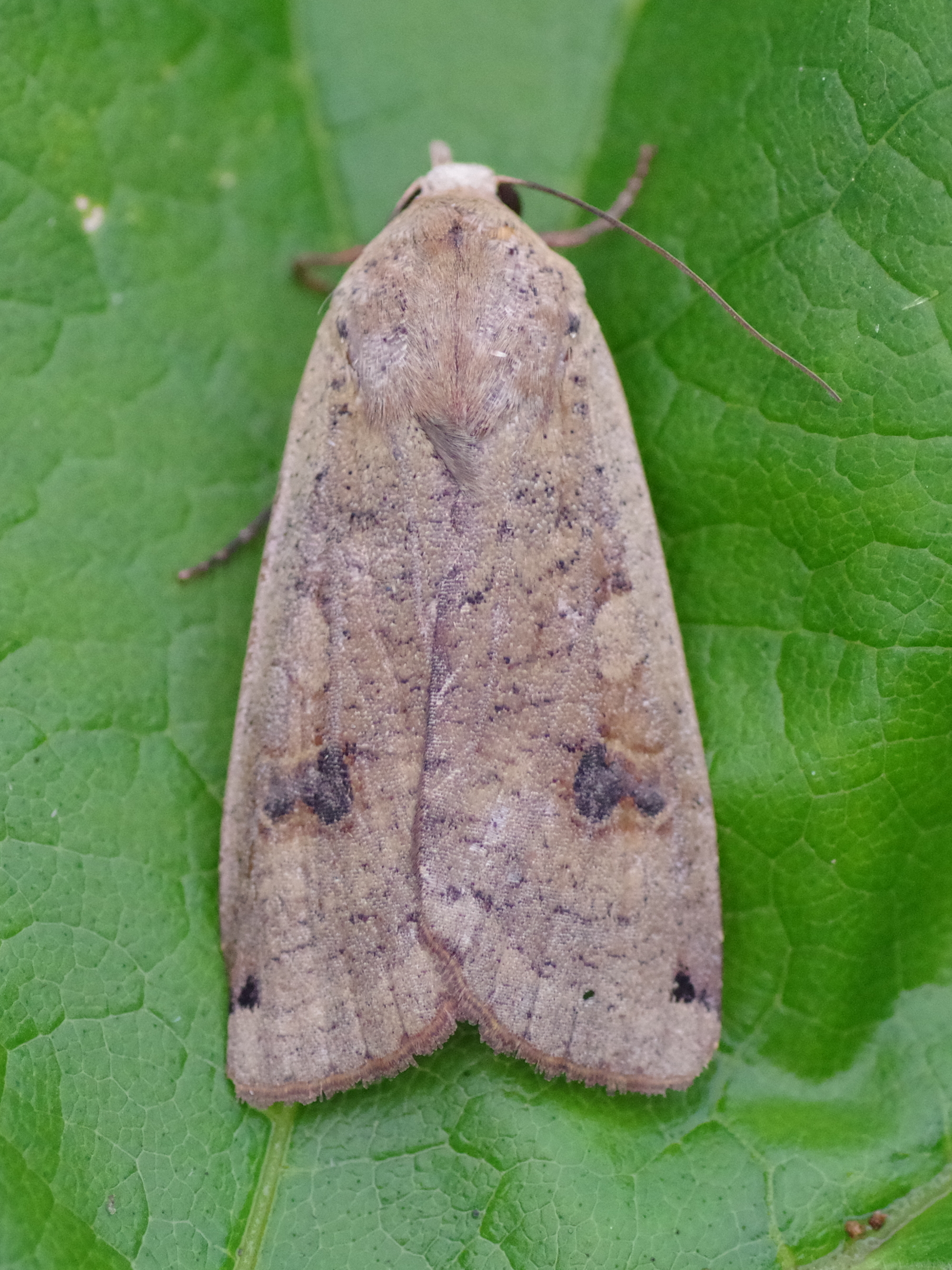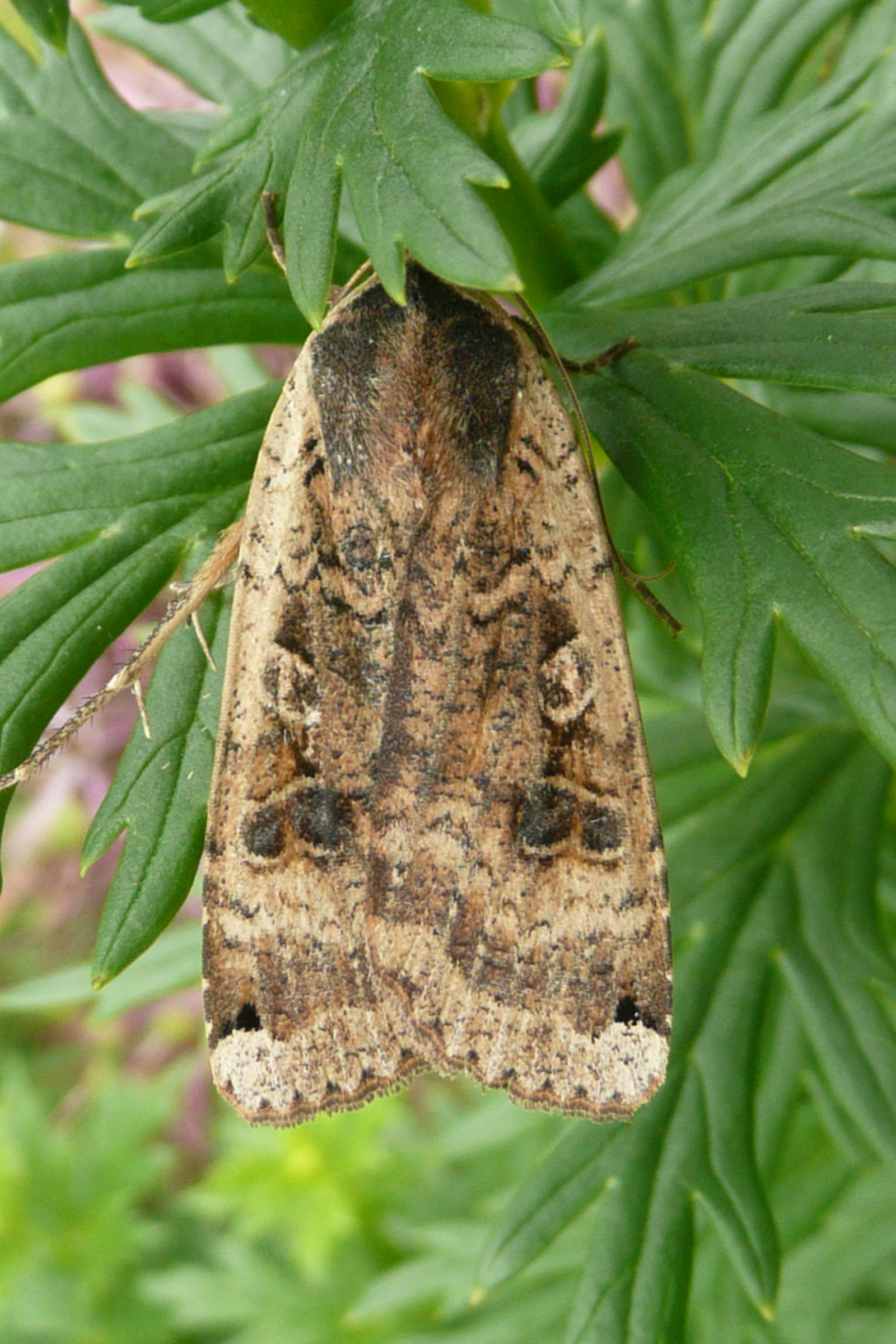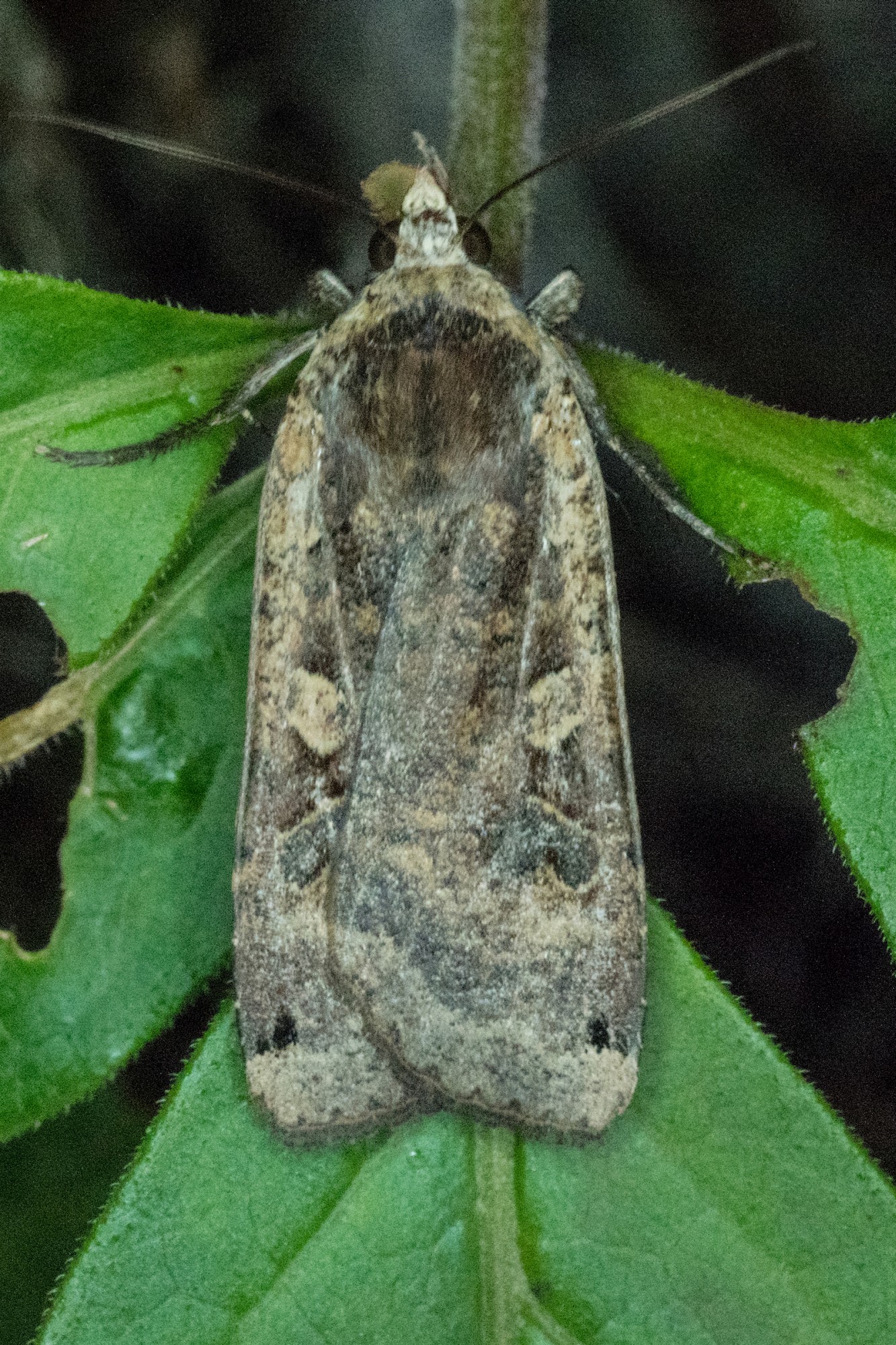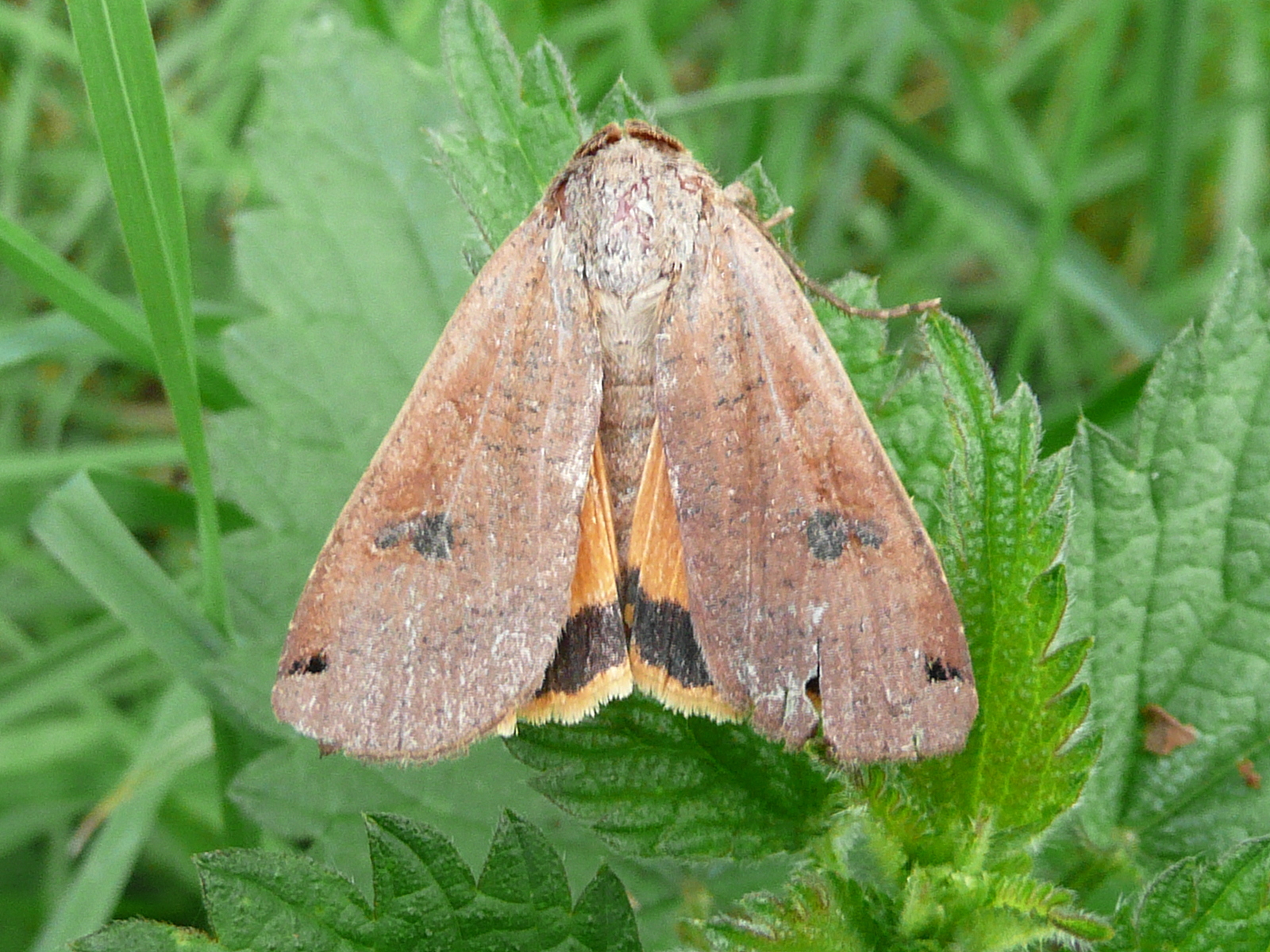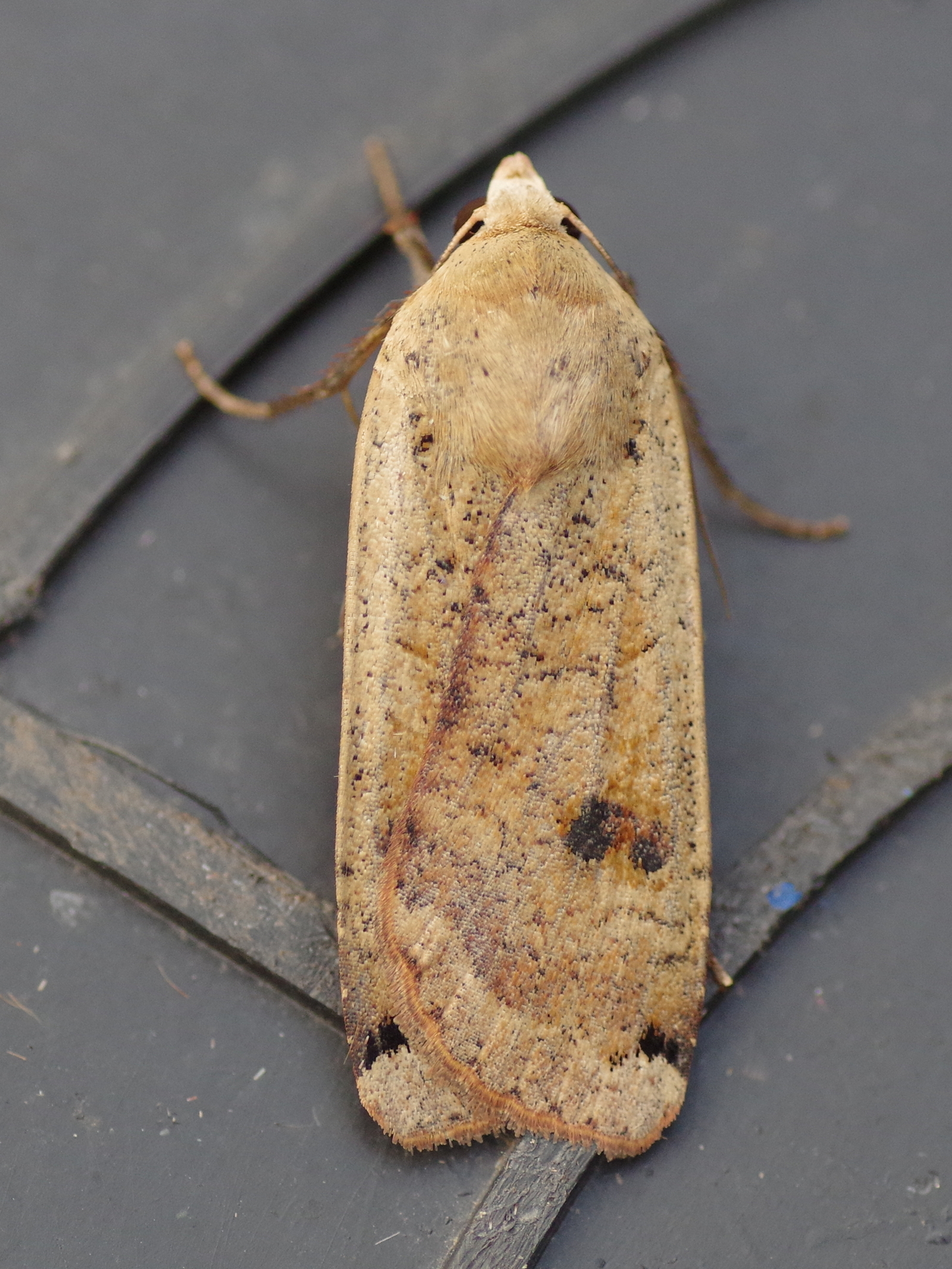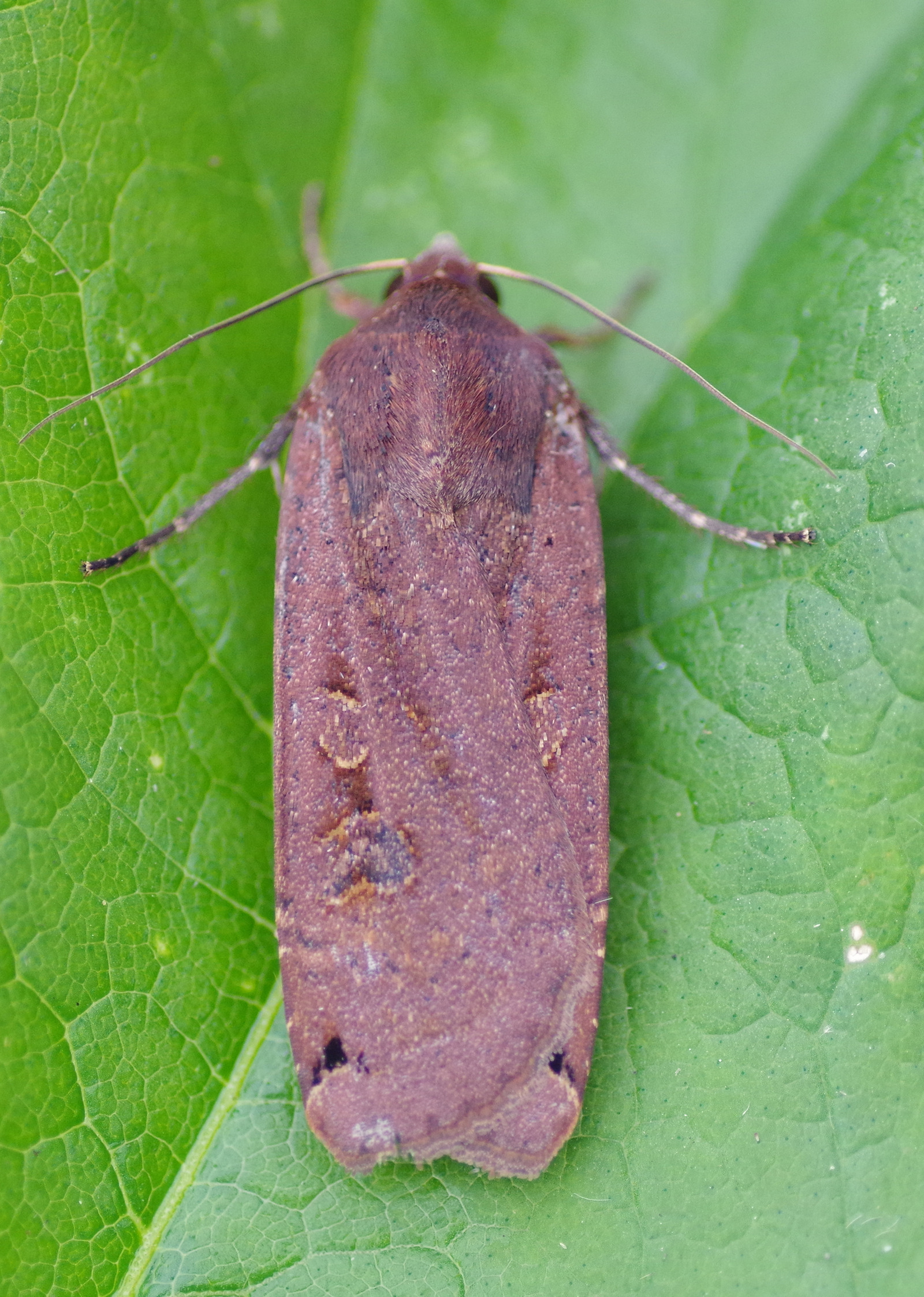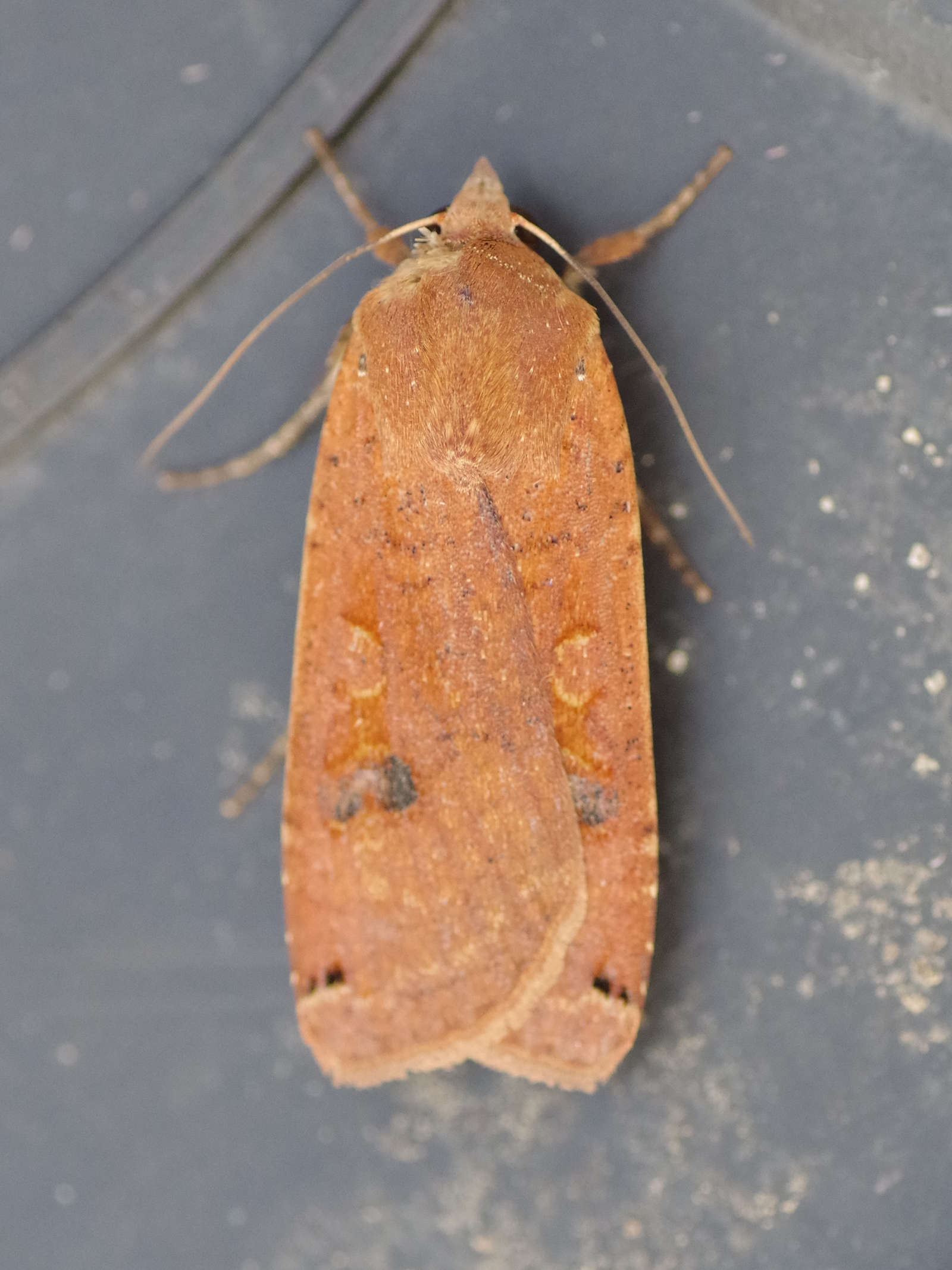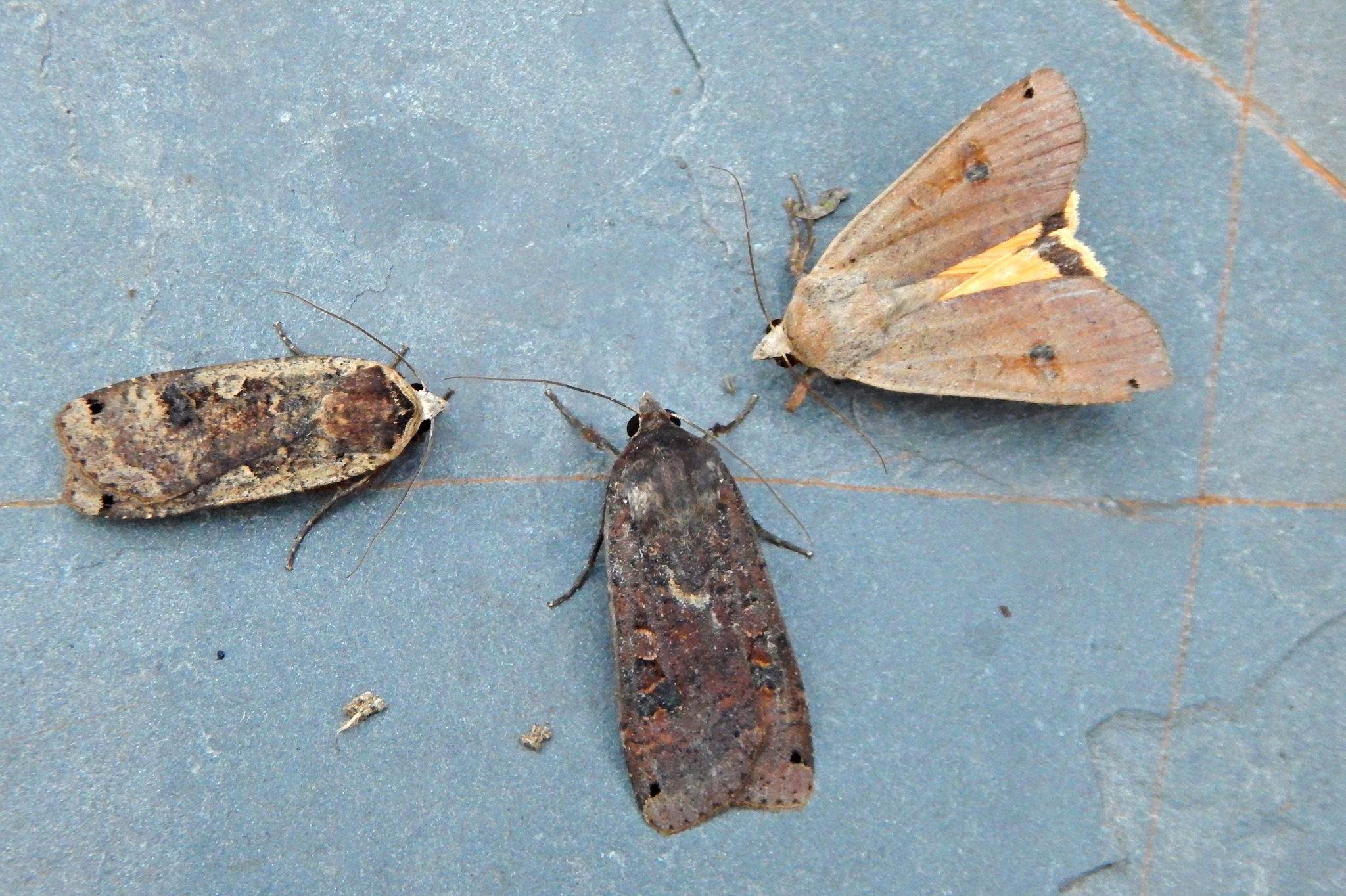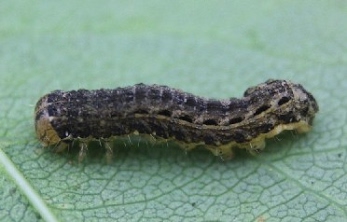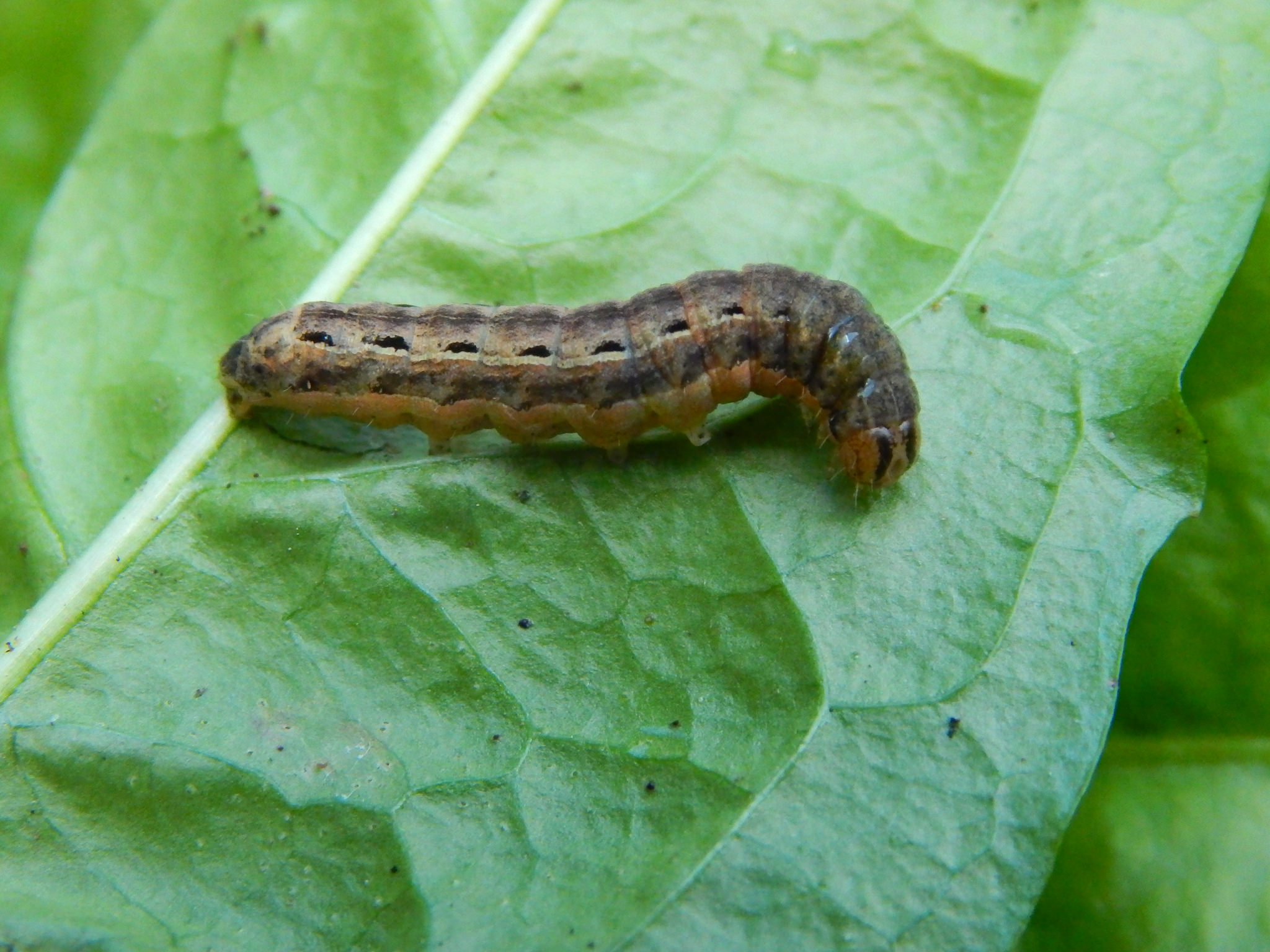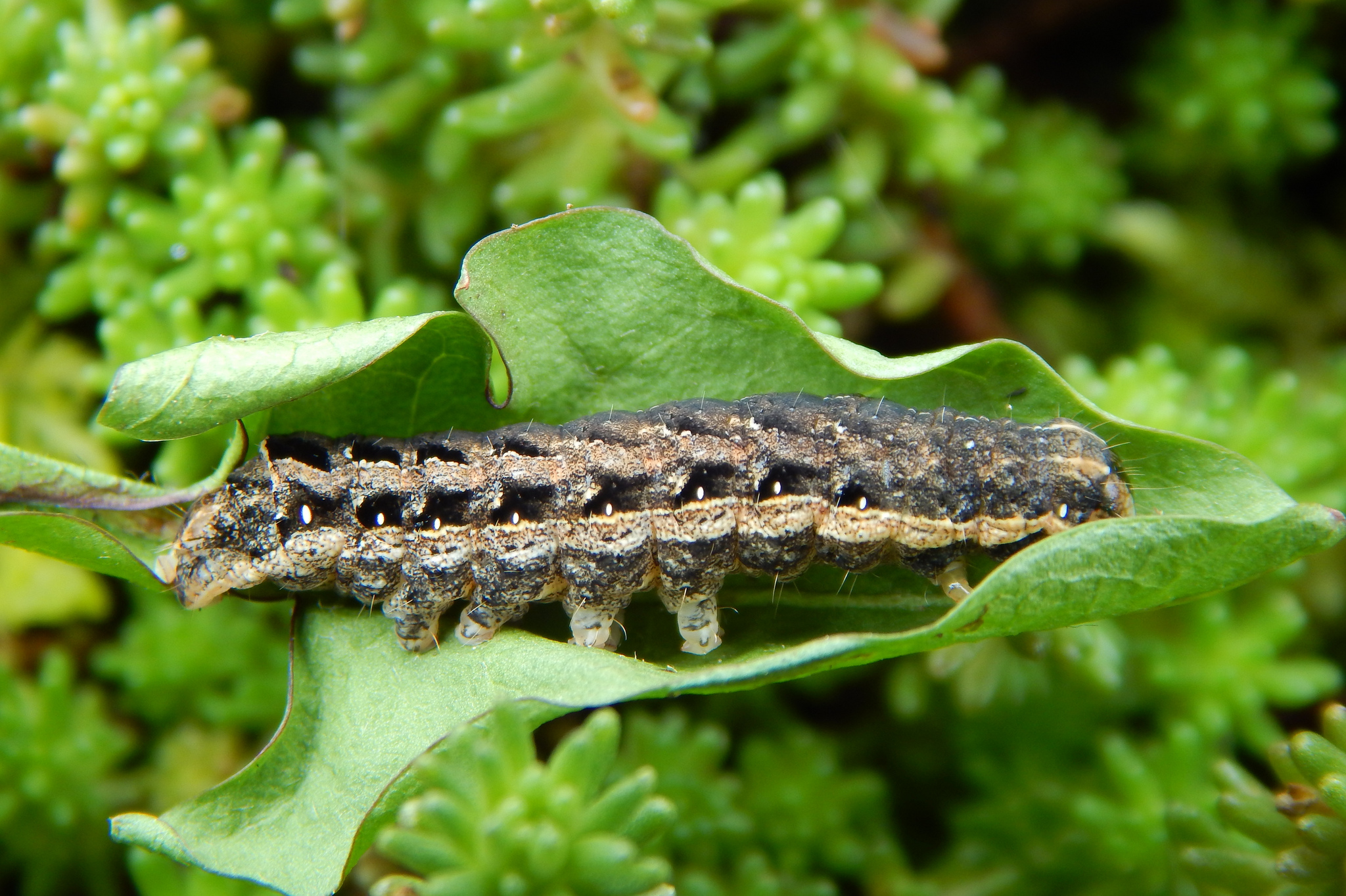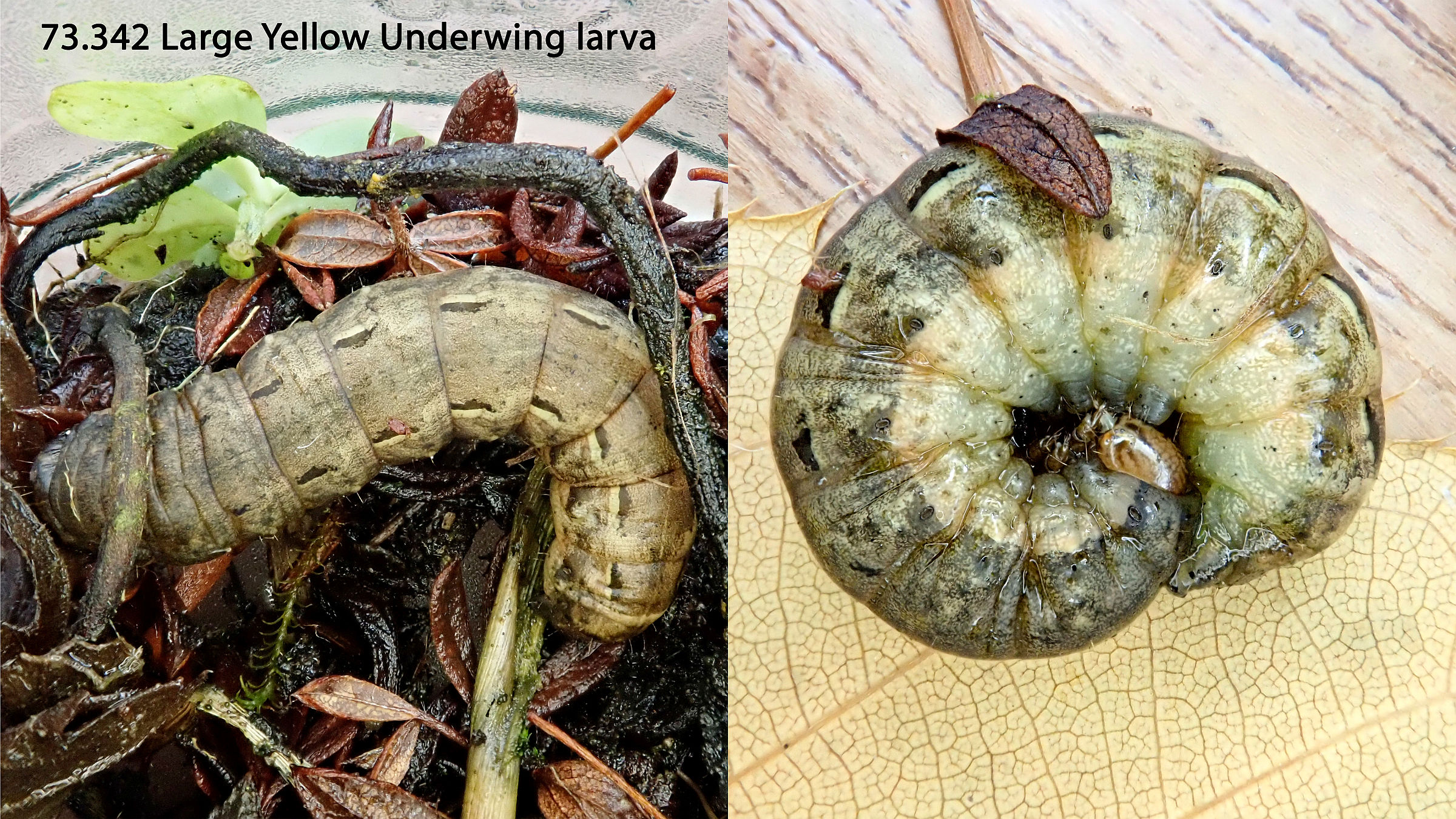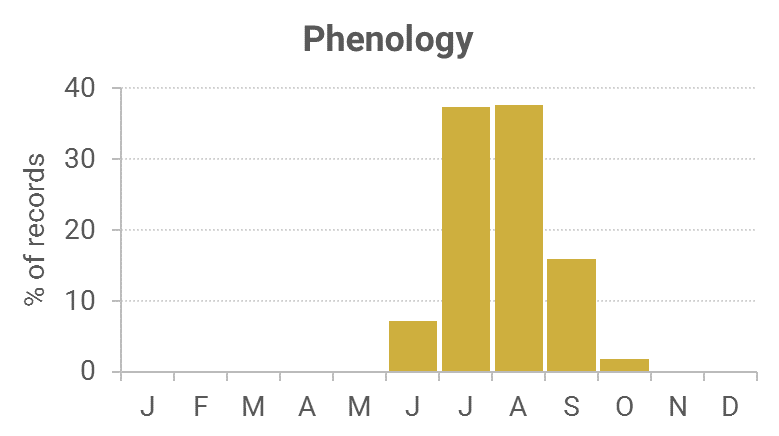See also Moth of the Week (01/08/2019)
Identification
Very variable but distinctive. Long, narrow forewing with a small black mark close to the apex. The hindwing has a black band, but lacks a crescent unlike other yellow underwings.
Recording Method.
Attracted to light, sometimes in large numbers, also comes to sugar and flowers.
Life cycle
One protracted generation. Overwinters as a larva, during August to early spring, when it pupates underground.
Larval foodplants
A wide variety of grasses and herbaceous plants.
Habitat
Ubiquitous, present in a wide range of habitats.
History
Lennon (1863) had stated it was abundant everywhere around the Dumfries area. Douglas Robinson (1870-71) had found it variable but swarming during July on Almorness (VC73). K.J. Morton of Edinburgh (1900) whilst on a visit in July 1899 to Wigtownshire had found this species in the Monreith area. Gordon (1913) also found it very variable and abundant everywhere in Wigtownshire. His early and latest dates being 14th June 1899 and 27th September 1905 respectively.
Sir Arthur Duncan (1909-84) during his lifetime had found it at Closeburn, Tynron and Castlehill, Dumfries (all VC72). Archibald Russell (1944) listed it as occurring near Gatehouse of Fleet (VC73) during the years 1942-43.
During the period 1974-92 the Rothamsted stations recorded about 500 records, then from 1992 to 2010 it was recorded from widespread sites across the region, with numbers of up to 300 at a site in one night, making it very abundant.

